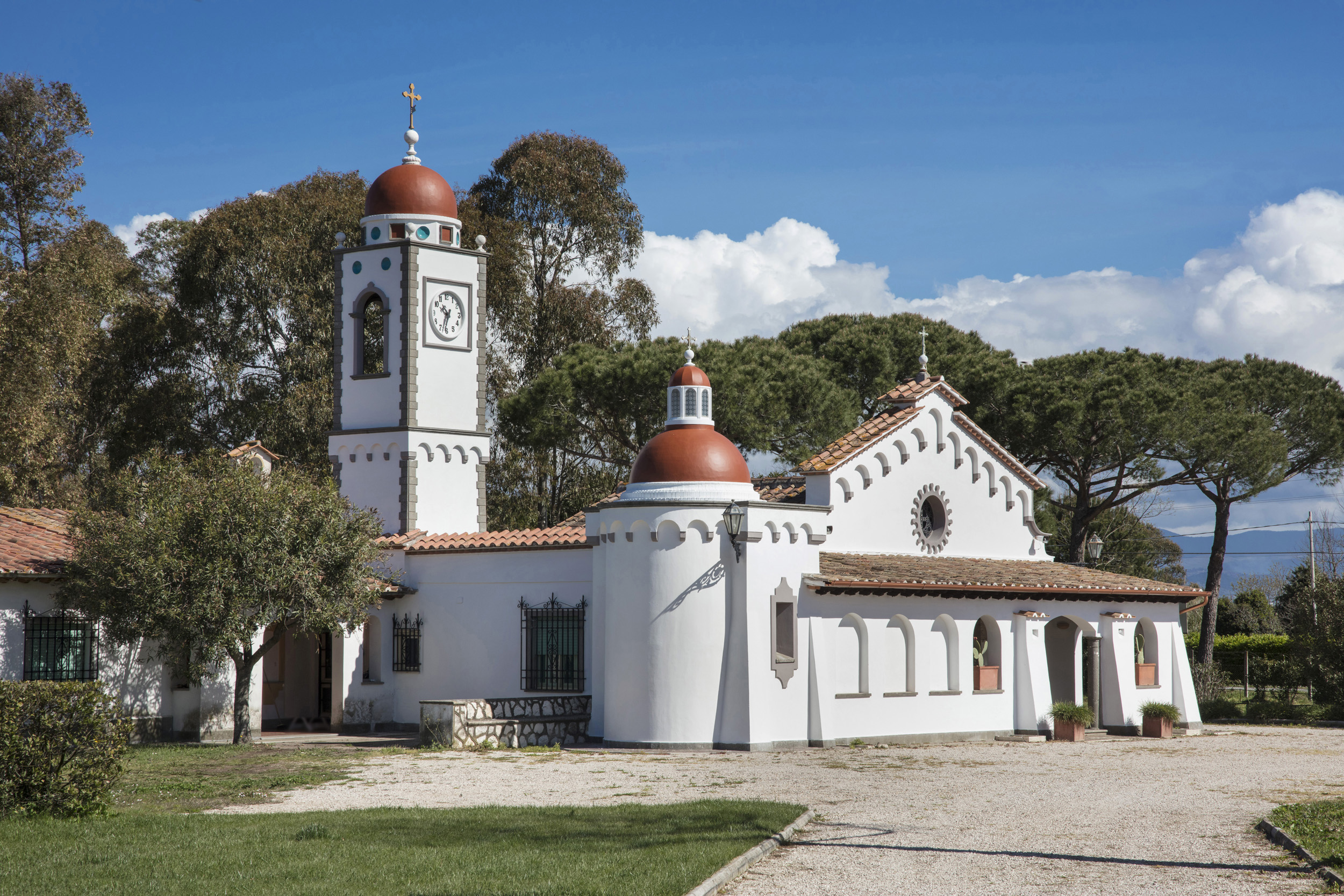Built in 1976, using the structure of the stable of the ONC farmhouse, then destroyed during the war. From an architectural point of view, it is reminiscent of the characteristics of Spanish colonial churches, while at the same time recalling Mediterranean Romanesque structures. In the center of the façade you can see the portal made by the marble worker Damiani of Latina, in gray stone, typical of the place, which contains a mosaic by the Aprilian artist Marco Paniccia. Inside the church, on the left side, there is the icon of Dalmatian origin, from the seventeenth century, which reproduces the Madonna del Buon Riposo. In the center of the wall is a plaque commemorating the Italian soldiers who died on the various fronts of the Second World War, and in particular in the battle of El Alamein. Above the tombstone is a small ceramic urn containing the sand of El Alamein with the inscription “SIT VOBIS TERRA LEVIS” (let the earth be light to you). Also starting from the left there is a series of tiles, of the Umbrian school, representing the Way of the Cross. In the center is the stained glass window, the work of Duilio Cambellotti, sculptor, painter and decorator who worked in Rome in the early 1920s. In the middle of the wall there are a series of icons of the school of Mount Athos, representing scenes from the life of Jesus, enclosed in two large carved wooden frames, signed by Sanfilippo, a famous Roman cabinetmaker. The altar, made of carved wood, of Sardinian manufacture, rests on a base of the lectern of the missal and the basin of holy water. Above the wall in front of the altar, there are 12 wooden statues, of Spanish manufacture, representing the Apostles, and two angels in Florentine artesian ceramic. The floor is made with tiles from the demolition of a church in Potenza. On either side of the entrance to the sacristy there are two ancient wrought iron supports that support two Venetian lanterns of the sixteenth century. A Roman-inspired rose window with a stained glass window representing a jeweled cross, creates an evocative atmosphere inside the church.
Reopening of the Church of Our Lady of Good Rest
Masses will be celebrated every Saturday at 5:00 p.m., at the Calissoni Bulgari Estate in Via Riserva Nuova, 56 Aprilia.
The Church of Our Lady of Rest
Martyrs' Chapel
Cristo de la Ayuda
Where there are the first tombstones in memory of the sacrifice of thousands of religious who fell in the name and defense of the Christian faith, during the Spanish Civil War (1936-1939). The shrine is particularly important because it is the only place in Europe, including Spain, where these martyrs are remembered, without distinction of belonging to the various religious orders, united only in sacrifice in the name of the Christian faith. Also remembered is the gypsy Ceferino Jimenez Malla, who died in defense of his parish priest, shouting in front of the firing squad of the red militiamen “Long live Christ the King”.
It is a reproduction of the Crucifix of the same name, which can be found in Spain, in Furelos, in Galicia, in the Church of San Juan, near Santiago De Compostela. The original crucifix is made of wood and is the work of the craftsman Manuel Cagide, from Furelos, who had a workshop in Santiago, and donated the sculpture to the church in 1950. The meaning of the outstretched hand is a sign of closeness to the faithful and is an exhortation to continue on the path undertaken.

